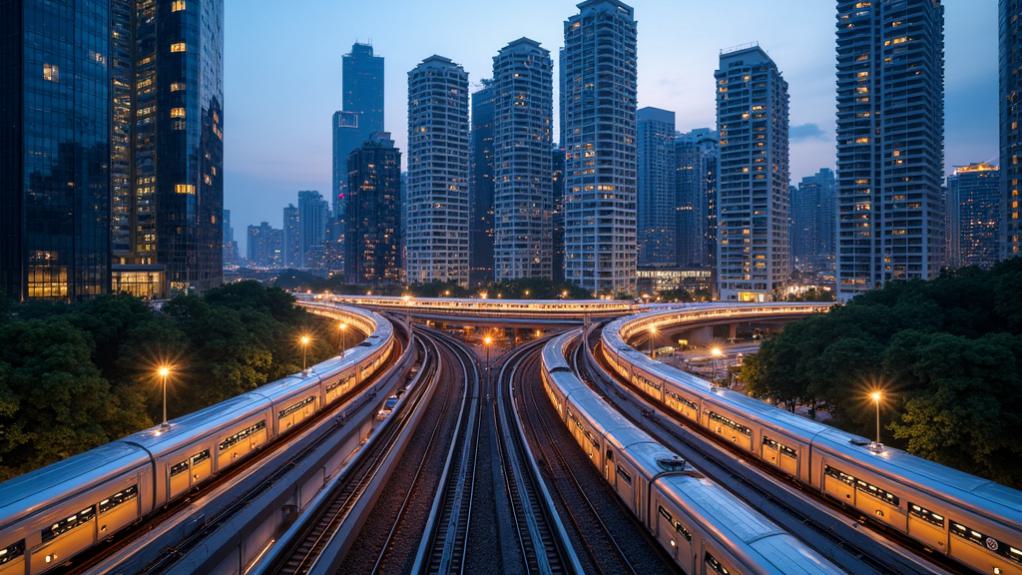While Singapore’s property market is influenced by numerous factors, proximity to Mass Rapid Transit (MRT) interchange stations has emerged as one of the most significant determinants of condominium pricing throughout the island nation. The data consistently demonstrates that properties within 500 meters of MRT stations command price premiums of 10-20% compared to similar developments situated farther away, with interchange stations amplifying these premiums due to their enhanced connectivity across multiple transit lines.
The stratification of property values based on MRT proximity follows a consistent pattern, with premium erosion occurring as distance increases. Properties beyond the 1-kilometer mark typically experience 5-10% lower appreciation rates compared to those in immediate proximity to interchanges. Tenure type further compounds this effect, as freehold and 999-year leasehold condominiums near interchange stations regularly outperform 99-year leasehold options in per-square-foot pricing metrics. This trend aligns with Singapore’s land scarcity that creates upward price pressure across the property market, particularly for well-connected locations.
Distance from MRT interchanges directly impacts property value, with appreciation rates declining 5-10% beyond the 1-kilometer threshold.
Market responsiveness to infrastructure developments manifests rapidly, with announcements of new MRT interchanges triggering immediate 5-10% price increases for adjacent properties, followed by 10-20% appreciation throughout the construction phase. This phenomenon creates substantial investment opportunities, particularly for early market entrants who secure positions before project completion. The subsequent gentrification of surrounding areas further enhances capital appreciation trajectories.
The rental market similarly reflects this valuation premium, with properties near interchanges commanding 15-25% higher rental yields, attracting buy-to-let investors who recognize the consistent demand from tenants prioritizing transit convenience. Young professionals, families, and expatriates demonstrate particular affinity for these locations, creating robust demand for compact two and three-bedroom configurations despite their elevated price points. This pattern is especially evident in denser neighborhoods where proximity to MRT significantly enhances overall property values.
Geographical variations persist across the network, with Central Business District interchanges generating higher premiums than suburban counterparts, though well-connected suburban interchanges with integrated commercial amenities continue to demonstrate strong performance.
Historical data from 2014 to 2024 confirms that MRT-proximate condominiums have consistently outperformed the broader market with 15-20% higher appreciation rates, underscoring the enduring influence of transit connectivity on Singapore’s residential property valuations.





